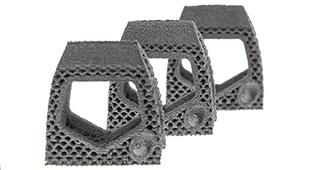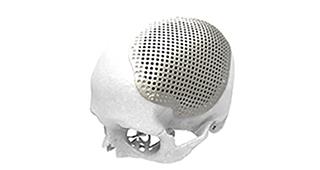Additive manufacturing for orthopaedic implants
Metal 3D printing orthopaedic implants
With additive manufacturing (AM), new designs that were not previously feasible become possible. Renishaw's metal AM technology is capable of producing complex features, such as ordered and disordered lattice structures, which can add functionality to joint replacement, spinal implants and craniomaxillofacial (CMF) implants. With accelerated development times, the period between design and manufacture can be kept to a minimum. Working with metals such as titanium and cobalt chrome, medical device manufacturers worldwide are exploiting 3D printing technology with the aim of creating implants with a longer life span, which will ultimately benefit patients.
Benefits of metal AM for orthopaedic implants
- Rapid prototyping, on the same platform as production, aids quick progression of novel designs and features
- Economically feasible to print multiple one-off patient specific implants in one build, supporting customised healthcare
- Incorporate complex structures, such as lattices or weight reducing cavities, at no extra cost
- Advanced in-process monitoring aids traceability
- Advanced gas flow system aids consistent metal density and mechanical properties
All brand names and product names used on this website are trade names, service marks, trade marks or registered trade marks of their respective owners.
All products may not be available in all territories, contact your sales representative for further information.





